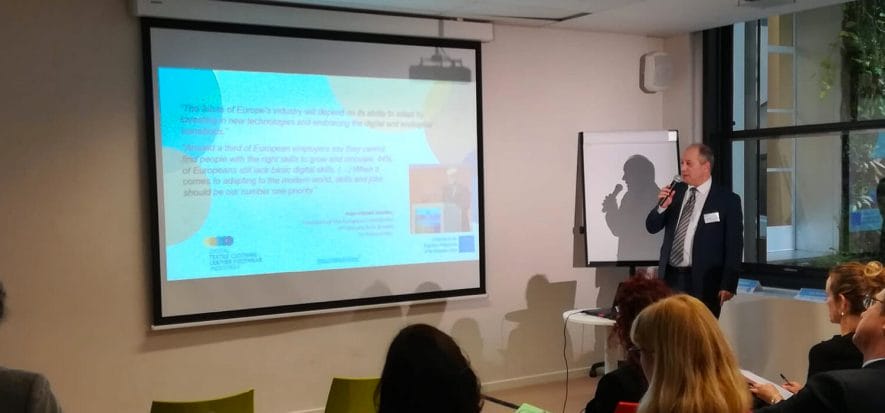In the next 5 years Europe’s fashion industry will recruit around 1,000 leather technologists, that is, some professionals with digital skills and expertise, to actively work in a complex and digitized cluster. In addition to that, in the next 5 years the industries of leather tanning, footwear and textile-clothing are going to hire over 40,000 new employees in total to fill several professional positions which are emerging during the so-called fourth industrial revolution, the digital one. Such estimates have been made public in Brussels, on February 8, during the final conference on the Digital Textile Clothing Leather Footwear Industries project. The project, which has been financially supported by European community programme Erasmus+ and fostered by Cotance, CEC and Euratex associations (together with IndustriAll trade union platform and Spin360, a consulting company), has pinpointed the new professionals of the fashion industry 4.0, as well as its demand for training and education. After surveying 205 companies, based in 22 countries, the project managed to find out that 55% of businesses suffer, for the time being, from the lack of internal staff with required digital expertise. 29% of footwear manufacturers, then, announced they are planning to hire, in the next 5 years, some leather technologists; likewise, 68.5% of tanneries are planning to take on, in the next 5 years, a few supply chain data managers, who will be able to deal with the new standards (in terms of information too) set by the fashion industry. While illustrating the characteristics of the professional skills, 9 in total, they have pinpointed, Federico Brugnoli (Spin360) pointed out they are not necessarily 9 different profiles, as they rather “consist of a set of activities that may also be combined with others”. “Digital revolution has been already affecting our businesses and our employees – remarked Lutz Walter, from Euratex –: overall, in Europe the fashion industry currently hires two million workers. Such revolution pertains to distribution and supply, manufacturing process, work activities and work places”. The Digital Textile Clothing Leather Footwear Industries project started in December 2016 and has come to completion slightly more than two years after. “We successfully managed to analyse the strong points of our system, starting from our training centres’ quality – wrapped up Gustavo Gonzalez-Quijano, from Cotance (in the picture) –, but we also assessed the weak areas, for example our ability to be appealing to youngsters. We are now stepping into a new phase, which will lead us to 2030: we need to urge all stakeholders to uphold the whole process, starting from financial support to training centres. We can’t educate and train the employees of the future by using the tools of the past”.
From leather technologists to supply chain managers: 40,000 digital employees at the service of European fashion











